Many patients who are looking for a smile makeover have worn teeth. Their goal is easily explained: They desire to have beautiful and youthful teeth again. This is why they search for the leading cosmetic dentist in their area. It appears that this is an easily achievable goal. However, teeth do not just carry aesthetic attributes, in fact, their purpose is purely functional, such as in speech and chewing.
This video explains in detail why worn and prematurely aged teeth need a more comprehensive treatment protocol to ensure long-lasting porcelain veneers and fully integrated dental restorations.
[Transcript]
"The reason why natural teeth look youthful is because they are simply YOUNG."

As we get older, our body changes. So do our teeth. The constant ingestion of food throughout a lifetime leaves its marks on teeth. They wear. And since their mineral structures are not maintained and replenished by living cells, teeth cannot grow back what they have lost. Hence, after a few decades teeth just look their age.
How does this happen?
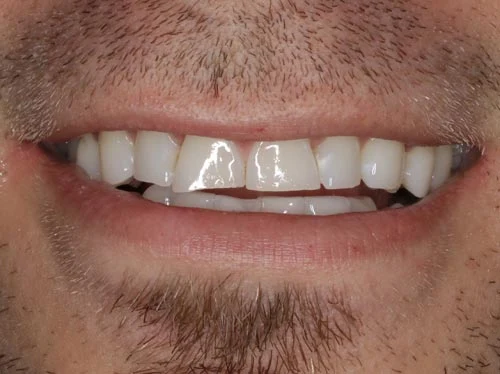
This is actually the most important question that needs to be answered by any cosmetic dentist prior to totally overhauling a worn dentition.
What are the most common causes for accelerated dental aging? One common demoninator is a disharmony between the chewing interfaces of upper and lower teeth and their mandibular joints. Dental misalignment during childhood, orthodontic treatment, skeletal discrepancies, habits, and trauma can cause a disparity between the jaw’s home position and the maximum contact surface of upper and lower teeth.
Often the jaw joints have to be shifted out of their sockets to help the dental upper and lower dental arches to make maximum contact. While it appears only logical that nature creates such a mechanism to allow for proper digestion of food, it also may be detrimental. Here is why:
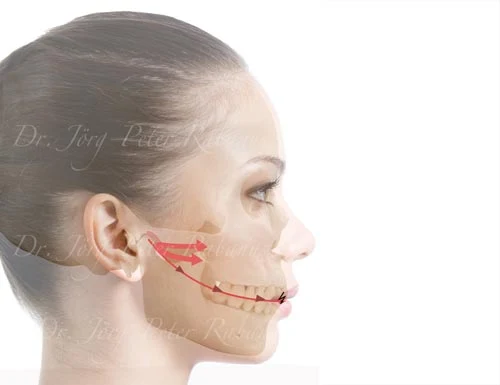
The brain functions just like a GPS that puts the dental arches into the most efficient position for chewing function, which is much more important than speech or a social smile. Food needs to be crushed to be of optimum nutritional value.
What happens when the natural GPS moves the mandibular joints out of their home position to get the maximum contact between upper and lower teeth so that they are able to execute what they are designed for?
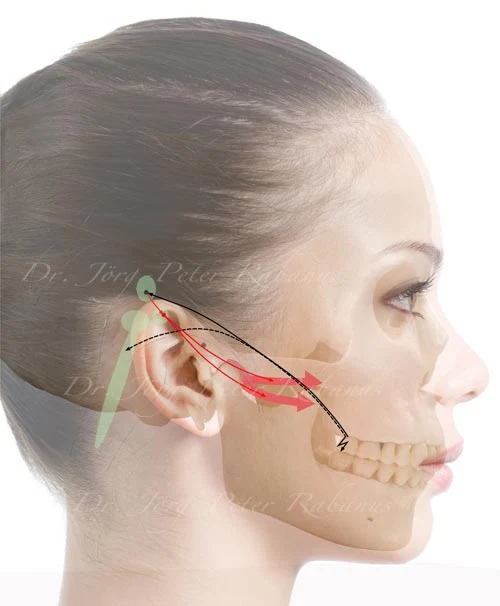
It is one particular muscle, totally invisible to anyone, with an exotic name, and frequently working overtime, that assures the positioning of the mandible towards maximum interaction of upper and lower teeth.This muscle is usually very successful, and teeth often appear to be in a perfect bite relationship. However, this would only be the case if the joints would be in their home position at the same time. But in many cases, they are not. And this is the problem.
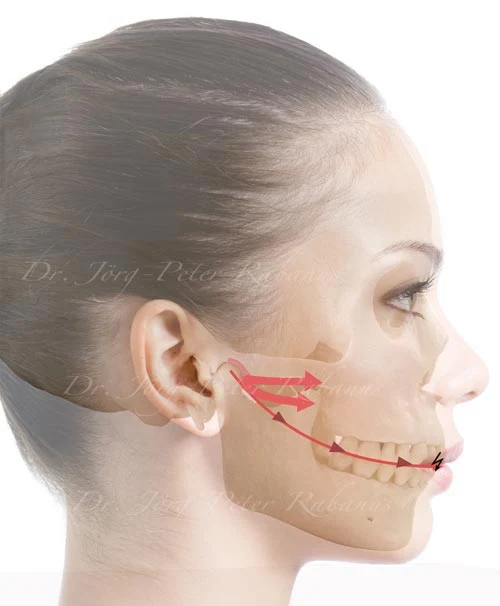
Temporomandibular joints have to glide down a slippery slope to follow the forward pull of the muscle. This opens the bite in the back. The lower front teeth shift forward and start rubbing against the upper front teeth. Being in this kind of a situation long enough, the incisal edges start to wear. Eventually this condition may cause a habitual clenching or grinding. It usually appears to be uncontrollable since the GPS of the brain controls the feedback mechanism, which originates from the receptors surrounding the teeth that signal to the GPS, which then, in turn, causes its positioning muscle to pull.
It becomes the GPS’s continuous quest to reconcile the desired maximum contact of upper and lower teeth with the best possible jaw position. This is obviously impossible due to the discrepancy between the joint’s home position and the maximum contact area of upper and lower dental arches. And, for the benefit of an efficient bite, the joints always lose out.
Disks, joints, and ligaments may deform as a form of reconciliation, which often leads to all kinds of symptoms. None of them very pleasant…
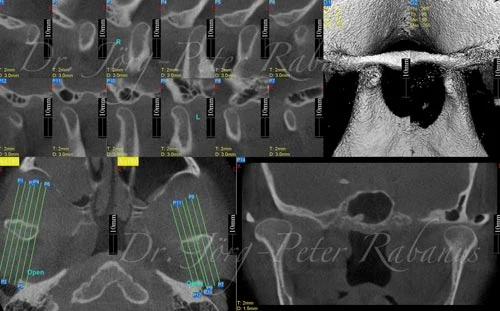
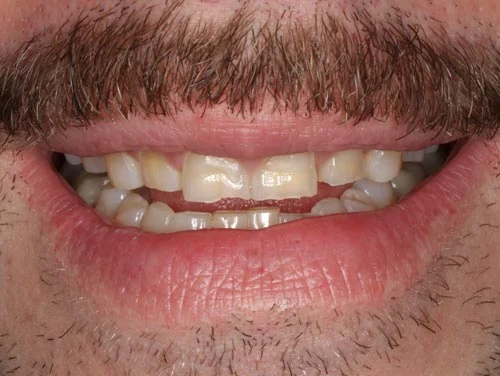
Understanding its possible causes, it is now more apparent that a simple placement of porclelain veneers obviously would not work. The forward pulling action of the main adjustment muscle would very often lead to a failure of the veneers or to additional neuro-muscular problems, which could be avoided.
What would be the first step before designing a new smile for such a patient? We need to find the joint’s home position and analyze from THAT position how upper and lower teeth relate to each other. In dentistry, we call this position “centric relation.”
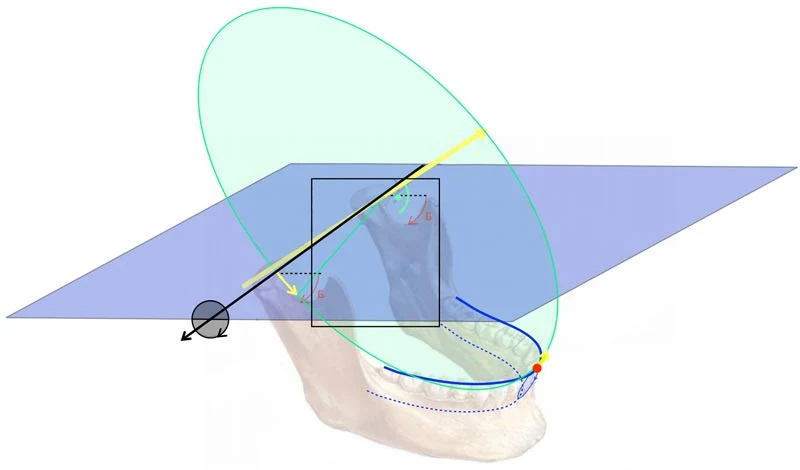
How do we do it? What interferes with the joints’ freedom to move freely into their bony sockets?
At this point we are most likely dealing with two culprits that prevent the joints of the mandible to reach their home base:
A few teeth that contact before all other teeth meet and the muscles that desperately try to find the maximum chewing power.
We cannot just grind away those high points of first contact between the pair of upper and lower teeth without having pacified the overworked muscles as well. They might still keep the mandible out of its home base.
There is an ingenious way to establish both, the separation of the interfering teeth and the relaxation of the adjusting muscle. This is done with a simple removable appliance.
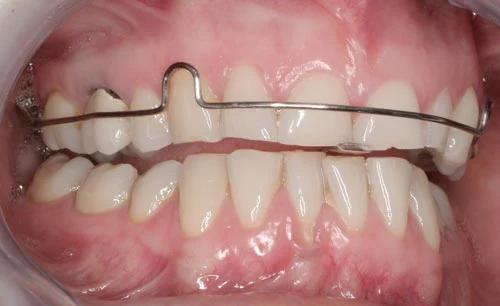
It prevents all lower teeth, except for the pair in the front, to contact the upper teeth. The pair of lower incisors at the front will close against a raised acrylic pad, thus preventing the other teeth to meet. This in turn will give all remaining structures the absolute freedom to find their natural position:
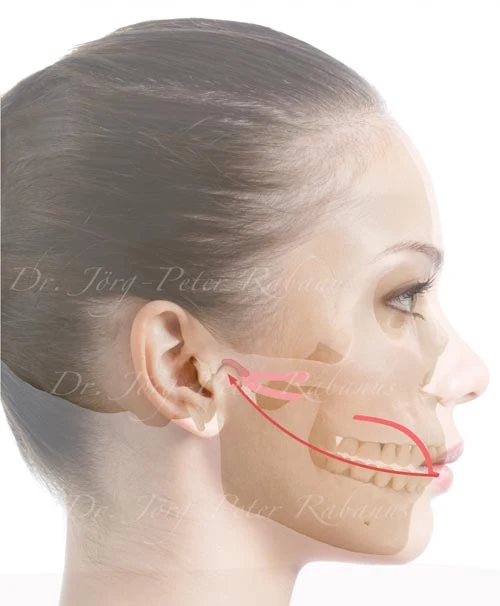
The joints slide back towards their home positions.
The adjusting jaw muscles relax on their quest to find the maximum tooth contact. The receptors of the anchors of the teeth wind down their signalling to the GPS of the brain.
I would like to emphasize that there may be other reasons for worn teeth and the various TMJ problems, which are summarized under the broad definition of temporomandibular disease. I am not talking about these in this video. Patients who are suffering of any such condition need to see a specialist for mandibular joint disease and associated conditions, before even considering anything like cosmetic dentistry. Their purpose would be to obtain a pain-free and harmonious chewing system.
For people without any serious temporomandibular joint disease, the removable appliance has helped many people with dental wear that is caused by a deviation of the jaw’s home position and the teeth’s maximum contact surface.
There are certain clinical tests that help the dentist to determine WHEN the muscles have been completely relaxed and the joints have reached their natural home position. Once confirmed, a bite record with the appliance in place is taken.
At this point, an upper and lower impression are taken as well, to create stone models of the dental arches. The bite record will now serve as a connector between the upper and lower dental models, which are mounted together to an artificial jaw instrument.
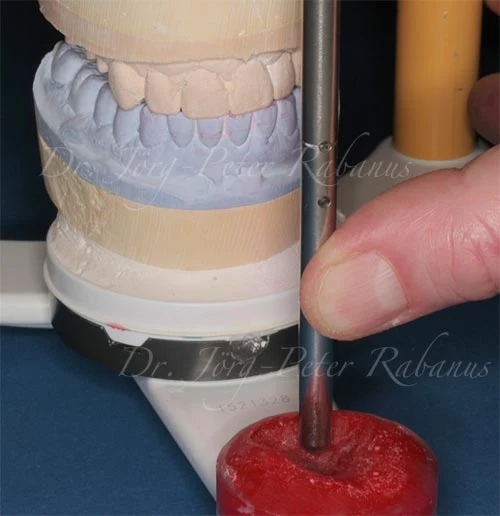
Now the proper relationship between upper and lower teeth in the jaw’s home position is secured to the artifical joint instrument. The bite record can be removed. When the teeth are closed against each other the first contact becomes visible. The dentist now has a clear picture about the exact relationship of the lower teeth against the upper teeth when the joints are in their home position.
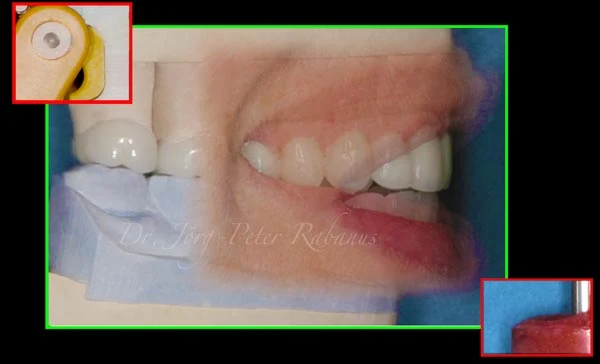
The design of a new smile or, if necessary, a complete reconstruction of the worn dental arches can take place.

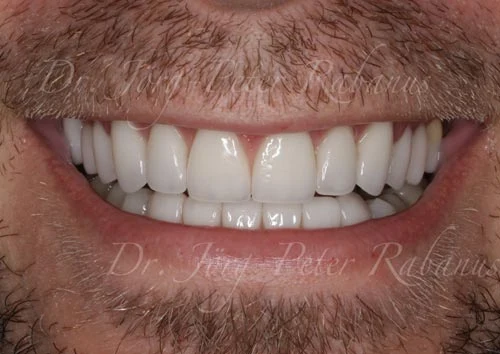
The result will be a beautiful smile with happy teeth, happy muscles, and a happy patient.

The dental office of cosmetic dentist Dr. Jorg-Peter Rabanus is located at Cosmetic Dentist San Francisco.



